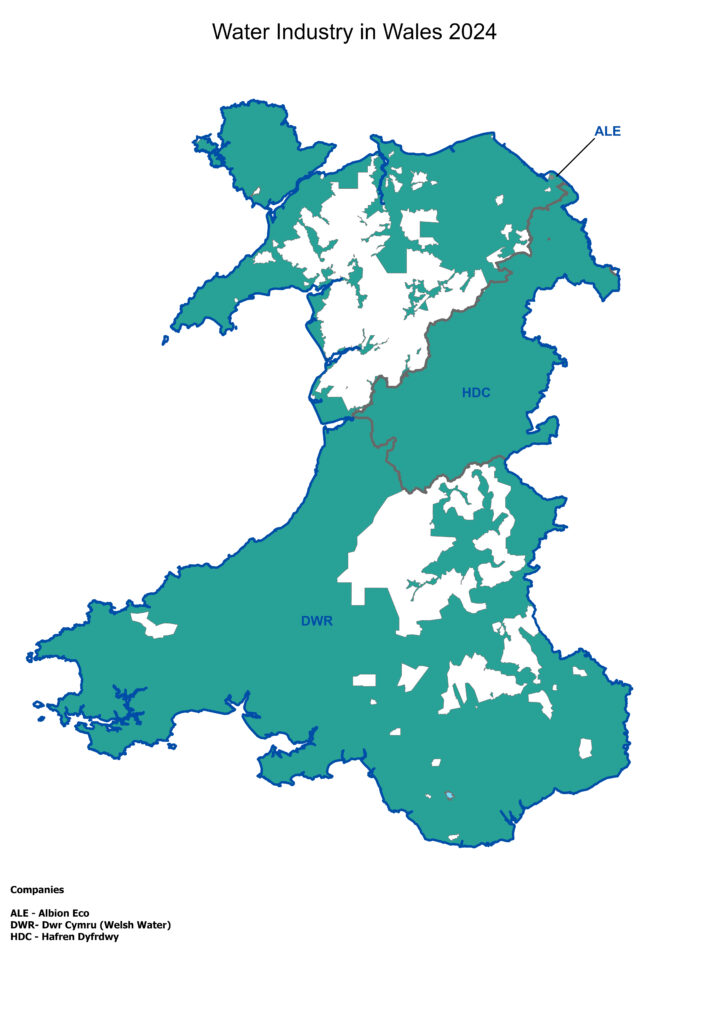- Drinking Water 2024 – Summary of the Chief Inspector’s report for drinking water in Wales
- Foreword
- Water supplies and testing
- Compliance with standards
- Learning from compliance failures
- Learning from events
- Consumer contacts
- Asset health
- Water safety planning and risk assessment
- Raw water
- Poly and perfluoroalkyl substances (PFAS)
- Audit programme
- Recommendations
- Enforcement
- SEMD
- NIS
- Materials in contact with drinking water (Regulation 31)
- Research publications
- Whistleblowers
- Working with stakeholders
- Annex A – Number of tests carried out by companies
- Annex B – Compliance with standards
- Annex C – Compliance failures and events
Water supplies and testing
Set out in this report are the key facts about the quality of the public water supplies in Wales, which is served by two water companies and one inset appointees, delivering supplies to over 3.3 million consumers. The area served by each water company is shown in Figure 1.
Figure 1. Companies supplying water in Wales

Table 1. Key facts about public and private water supply arrangements in Wales
| Public | |
| Population supplied | 3,300,180 |
| Water supplied (L/day) | 941,728,000 |
| Treatment works | 69 |
| Service reservoirs | 394 |
| Water supply zones | 103 |
| Length of mains pipe (km) | 30,543 |
| Surface sources | 259 |
| Groundwater sources | 40 |
| Mixed water sources | 1 |
| Private | |
| Population supplied | 67,130 |
| Water supplied (L/day) | 110,242 |
| Number of supplies | 14,904 |
| Number of local authorities with private supplies | 22 |
| Supplies without a risk assessment | 11,671 |
Area of supply:
Anglesey, Blaenau Gwent, Bridgend, Caerphilly, Cardiff, Cardiganshire, Carmarthenshire, Conwy, Denbighshire, Flintshire, Gwynedd, Herefordshire, Merthyr Tydfil, Monmouthshire, Neath and Port Talbot, Newport, Pembrokeshire, Powys, Rhondda Cynon Taff, Shropshire, Swansea, Torfaen, Vale of Glamorgan and Wrexham County Borough.
Where local authority or water company boundaries cross regional boundaries, the whole local authority or water company data has been attributed to the region in which the majority of its area lies.
